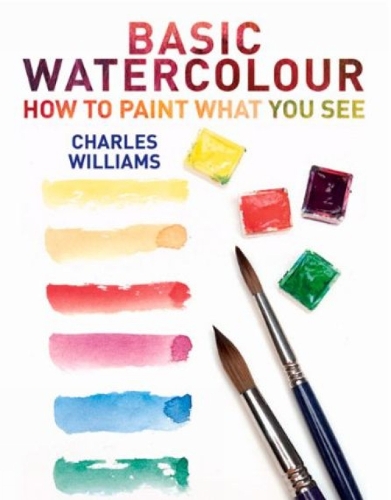
Basic Watercolour
(Hardback)
Publishing Details
Basic Watercolour
By (Author) Charles Williams
The Crowood Press Ltd
The Crowood Press Ltd
1st July 2014
United Kingdom
Classifications
General
Non Fiction
Paintings and painting in watercolours or pastels
751.422
Physical Properties
Hardback
207
Width 250mm, Height 196mm, Spine 13mm
660g
Description
Watercolour has an anomalous position in the visual arts. Its association with Victorian lady-amateurs, the (incorrect) idea that it is a fugitive medium and will fade over time, as well as the contradictory ideas that it is very difficult to use and that it is a beginner's medium, mean that it has long been sidelined in favour of oil and acrylic paints. But 'Watercolour', a recent blockbuster show at the Tate Britain, and the contemporary interest in less conventional media point to a renewed interest in this underrated art-form. Watercolour painting does have particular difficulties - it is transparent and therefore fairly unforgiving, for a start - but its advantages are huge. It is light and easy to carry the kit about, it is easy to clean and to prepare, it is unobtrusive, and a lot of the material you need you will already have around the house - a jam jar, water and don't forget the most important item: toilet tissue! Watercolour is also a great and constantly evolving challenge, and can be used in all sorts of ways. Within these pages a range of artists share their very diverse approaches to painting in watercolour, to give the reader an idea of how adaptable and enjoyable this medium really is.
Reviews
With amusing anecdotes, Charles leads us through the basics of a difficult medium. Leisure Painter A charming, easy to follow and rather personal guide to painting what you see with this underrated medium. Artists & Illustrators
Author Bio
After a long period living and working in that bustling artistic centre that is London's East End, Charles Williams is now living in a vast, crumbling mansion in an obscure town in Kent, painting and writing, and teaching at Canterbury Christ Church University. Williams' work has been shown in public and commercial galleries in the UK and abroad, and his previous book, Basic Drawing: How To Draw What You See, reflects his deeper interest in enabling an appreciation of the practical side of the visual arts.
